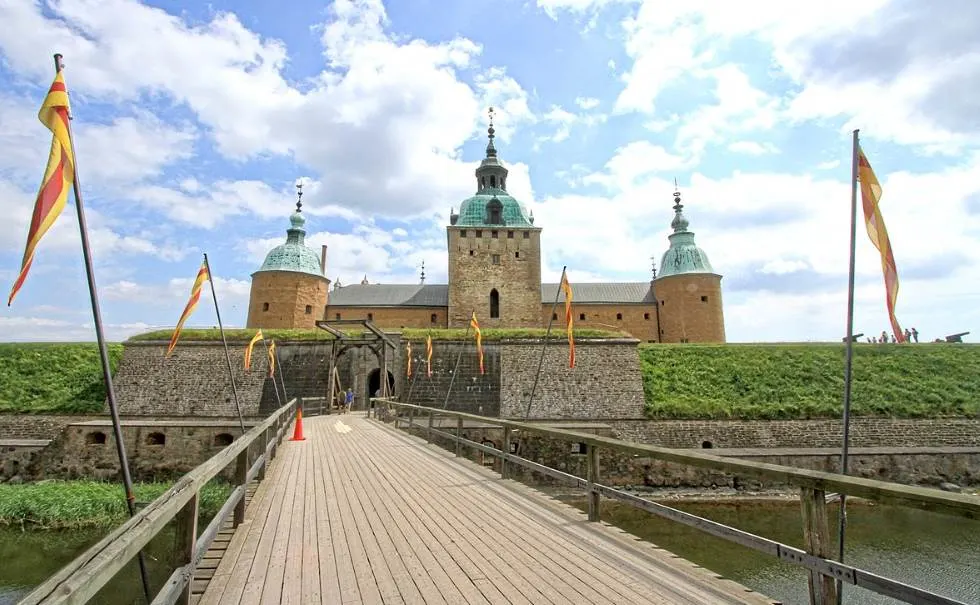A fortification that was constructed as a traditional medieval castle in Europe underwent a completed facelift in the 16th century.
The castle transformed into one of the most amazing Renaissance buildings in Scandinavia. Its location certainly adds to the magic of this structure, that’s for sure.
In this article, you’ll discover some of the most interesting facts about Kalmar Castle, one of the greatest features of architecture in Sweden.
1. It’s located in a city in the southeast of Sweden
Kalmar Castle is located in the southeastern part of Kalmar, a city in the province of Småland in southeast Sweden.
Kalmar is the third-largest city in Småland and the capital city of Kalmar County. It has a population of nearly 40,000 inhabitants and is situated along the shores of the Kalmar Strait.
This strait separates the Swedish mainland from the elongated island of Öland. The huge Öland Bridge has a length of 6,072 meters (19,921 feet) and connects Kalmar with the island.
The bridge, the castle, and the amazing Neoclassical building called Kalmar Cathedral are the architectural highlights of this city.

2. The first defensive structure was constructed in the 12th century
The strategic location on which Kalmar Castle was constructed was already recognized during the Middle Ages.
The first structure that was built here dates back to the 12th century. This was a round defensive tower that adjoined a small harbor.

The first structure in this location that can be classified as a castle was constructed by Swedish King Magnus Ladulås (1240-1290) in the late 13th century.
This building was why Kalmar became one of the most important cities in Sweden between the 13th and 17th centuries, and why it has been referred to as “The Key to the Kingdom.”
In that sense, it resembles a famous castle in England called Dover Castle which has been referred to as “The Key to England.”

The importance of the castle is emphasized by the fact that one of the most important moments in medieval Scandinavia happened here.
The establishment of the Kalmar Union in the year 1397 happened at the castle.
This was a union that was instigated by Queen Margaret I of Denmark and which united the three Scandinavian kingdoms of Sweden, Norway, and Denmark.
This union lasted between 1397 and 1523 and ended when the Swedes rebelled against the Danes in the early 1520s.
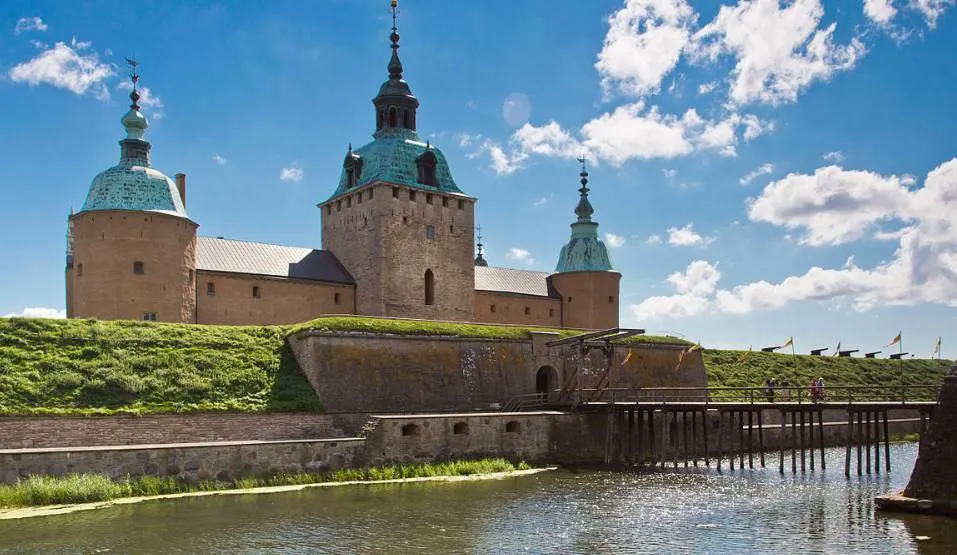
4. It was transformed into a Renaissance building in the 16th century
The castle was defended by a Swedish noblewoman named Anna Eriksdotter Bielke (1490 – 1525) but she had to surrender to the Danes in 1523.
This was also the year that the union under a single monarch ended and Gustav I was coronated as the King of Sweden.
This king and his sons transformed the castle from a medieval fortification into a Renaissance castle that could hold a candle to the most amazing Renaissance buildings in Europe.
The King’s Chamber holds a model of how the castle looked in the 1560s. The Golden Hall with its remarkable wood-carved coffered ceiling largely remains in its original state.
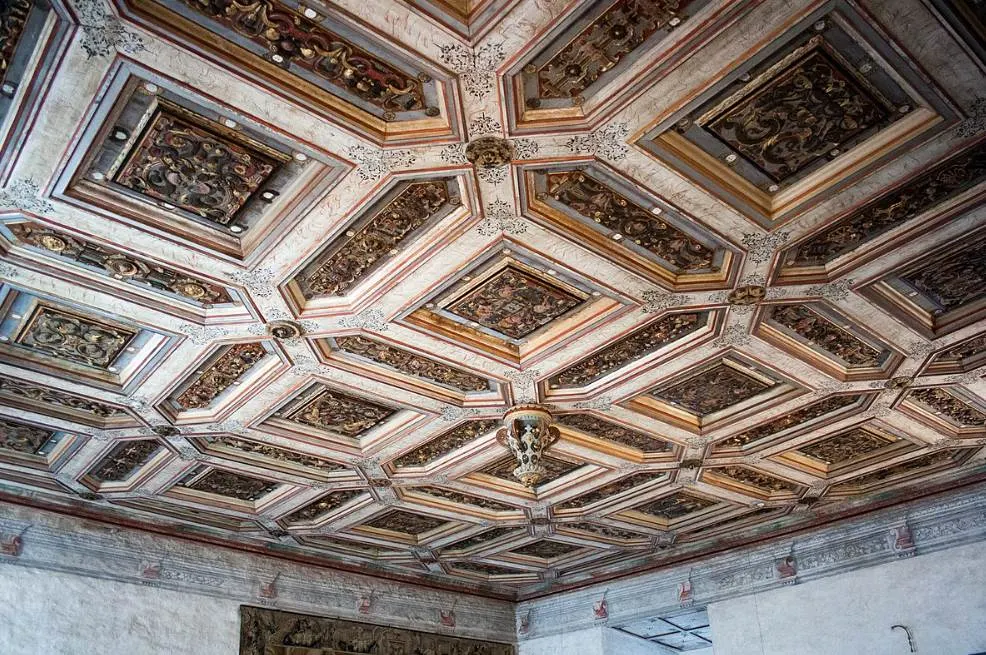
5. It was the scene of a horrible bloodbath in the late 16th century
War erupted in the late 16th century and it’s referred to as the War against King Sigismund. It was initiated by Duke Charles, the future King Charles IX.
The castle was besieged by the Duke’s forces in March 1599 and although they help out for several weeks, they were forced to surrender on May 12, 1599.
The three noblemen holding the castle along with 19 members of the garrison were executed without trial, an event referred to as the “Second Kalmar Bloodbath.” The first one happened in 1505.
The decapitated heads of the victims were displayed on pikes above Kalmar’s western gate. How about that for a warning sign, right?
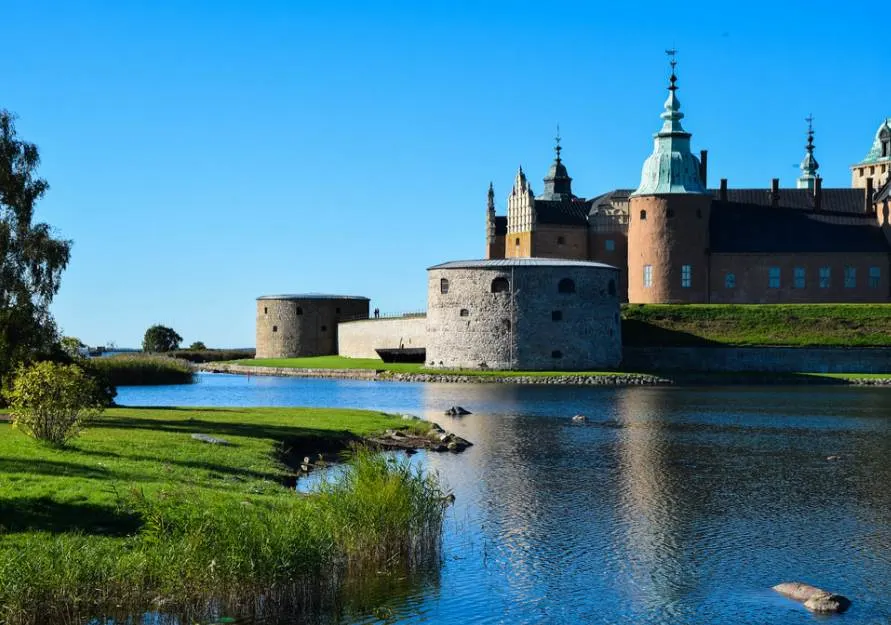
6. The castle was severely damaged during a 3-month siege in 1611
Kalmar Castle continued to play a major role in the history of Sweden shortly after. It gave its name to the Kalmar War fought between Denmark-Norway and Sweden between 1611 and 1613.
The most intense event during this war was the Siege of Kalmar. as you surely expected, this siege took place at Kalmar Castle and lasted for 3 months between May 3 and August 3 in the year 1611.
Although the Danes initially overtook the castle, it was returned to Sweden after the Kalmar War in 1613.
The Peace Treaty of Roskilde was signed in 1658 and this moved the Danish border much further south to where it’s located today. This marked the end of the defensive purposes of the severely damaged castle.
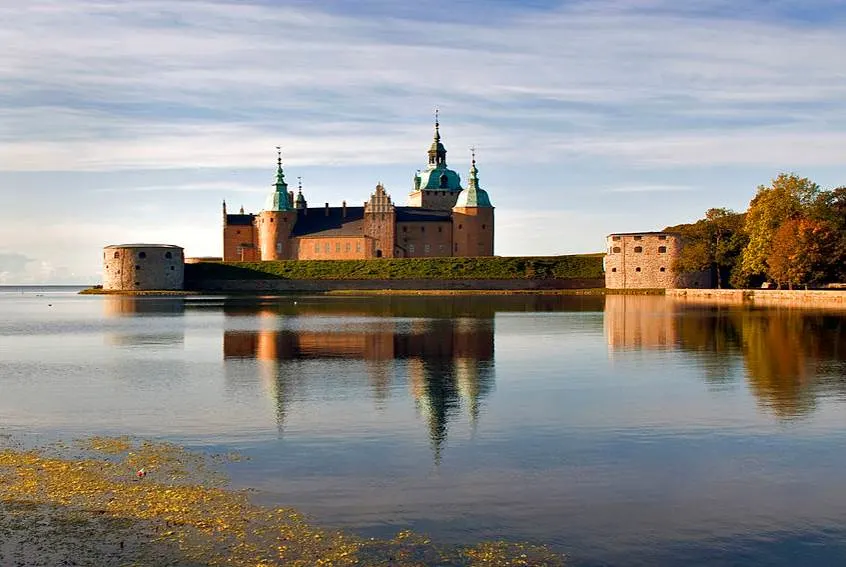
7. Kalmar Castle was restored to its former glory in the 19th and 20th centuries
The Romantic era of the 19th century was a period of increased interest in medieval castles. Many castles in Europe were restored and became tourist attractions.
The remarkable Renaissance architecture of the castle was something that many people found stunning at the time so a renovation project was launched halfway through the 19th century.
The most extensive renovation was completed between 1885 and 1891 when the castle’s overall design was restored to its former state.
The final renovation phase happened in the first half of the 20th century and included reinstalling the moat and drawbridge.
It took until 1941 before the castle was completely surrounded by water again.

8. The important building is one of the most popular tourist attractions in the region
Do you want to visit Kalmar Castle? You can!
The castle is open for visitors every single day between 10 am and 6 pm. Guided tours allow you to explore the Royal state apartments, the castle’s dungeon, and all other parts of the structure.
Permanent exhibitions at the castle allow you to discover the most important moments in the 800-year history of the castle as well.
